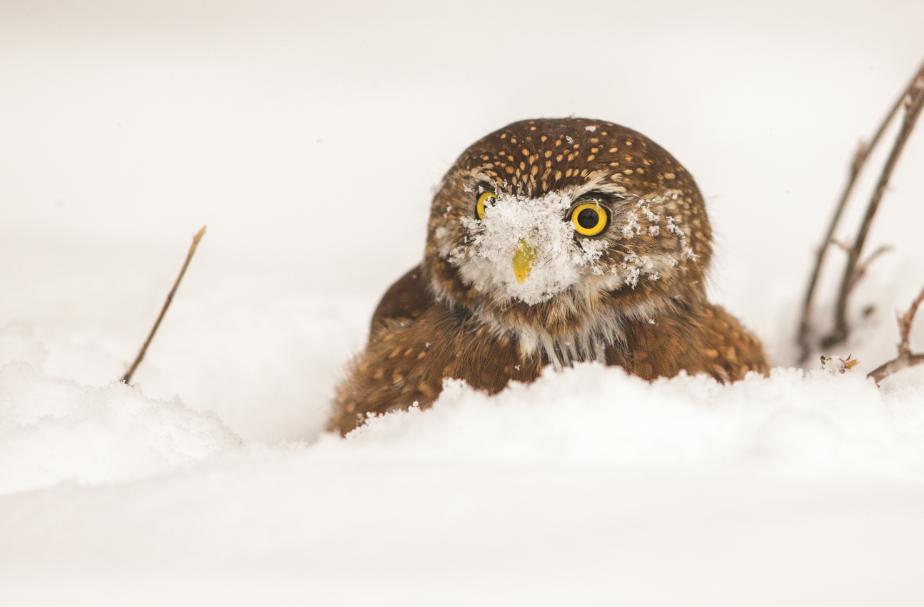
Northern Pygmy-Owls must enlarge their territories in the winter when prey becomes less abundant. Small mammals are harder to find, reptiles and amphibians are in hibernation, and many small birds have migrated. And so these owls often move downslope to places along waterways or near bird feeders, where there is a greater concentration of passerines and rodents.
One December, a friend living in the eastern foothills of the Washington Cascades told me of a Northern Pygmy-Owl that periodically visited his backyard feeder to take California Quail attracted by the seed. A few weeks later my friend called to tell me, “The owl is back and it’s got another quail!”
When I arrived, the Pygmy-Owl was not there, but my friend showed me where it had cached what was left of the two quail. On a follow-up trip, I set up my camera and waited for a couple of hours in the snow, focusing on the most recent kill. Finally, the owl returned and began eating.
That evening brought a couple of additional feet of powder snow, which covered the remains of both quail. The next day, I watched in the blowing snow and freezing temperatures, but saw no sign of the owl — or any other birds, for that matter. I began to worry about the owl and its ability to survive the unusually harsh storm.
Usually I am opposed to interfering with nature, but worrying about the owl’s ability to survive, I uncovered the most recently cached quail and placed it on top of the snow. Without warning, the owl dropped from a tree and into the now partially filled depression. After looking around, it began digging with its face and feet, the front of its head covered with a mask of white. When it had dug to the depth where the prey had been, it spread its search a little bit wider before jumping to the edge of its excavation. It then shook off the snow vigorously, completely ignoring the partially submerged quail carcass in front of it, and flew off. So much for doubting the owl’s ability to survive the snow. After a few minutes, the owl flew to the site of the older quail, dug in exactly the right spot and to the proper depth, and began eating. I sneaked over to the fresher quail and nudged it back into the hole, covering it with snow. To my surprise, after struggling to get meat off the older quail, the owl flew back to the fresher site, dug into the snow, found its original target where it belonged, and began eating.
That encounter reinforced two ideas about Northern PygmyOwls: that they move downslope during winter snow and find areas with unusual prey abundance, and that owls have exceptional spatial memories. I had seen Northern Pygmy-Owls and Northern Hawk Owls cache food on many occasions, but I had not imagined the degree to which they memorize the exact locations, even when visual cues are hidden—a life-saving skill for birds that depend on fluctuating food supplies.
This article originally appeared in our Winter 2017 issue of Mountaineer Magazine. To view the original article in magazine form and read more stories from our publication, click here.
 Paul Bannick
Paul Bannick